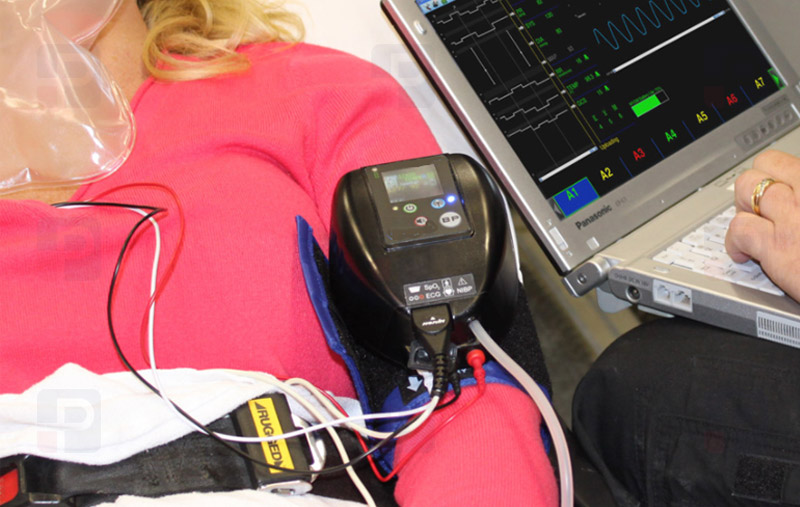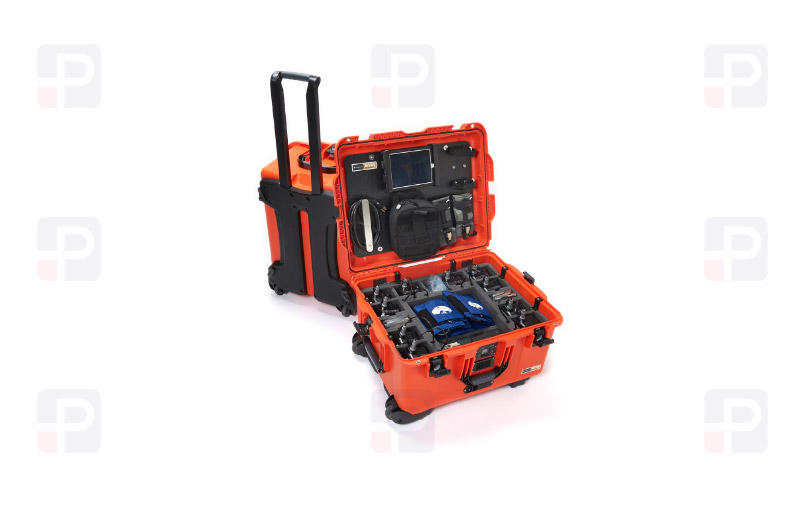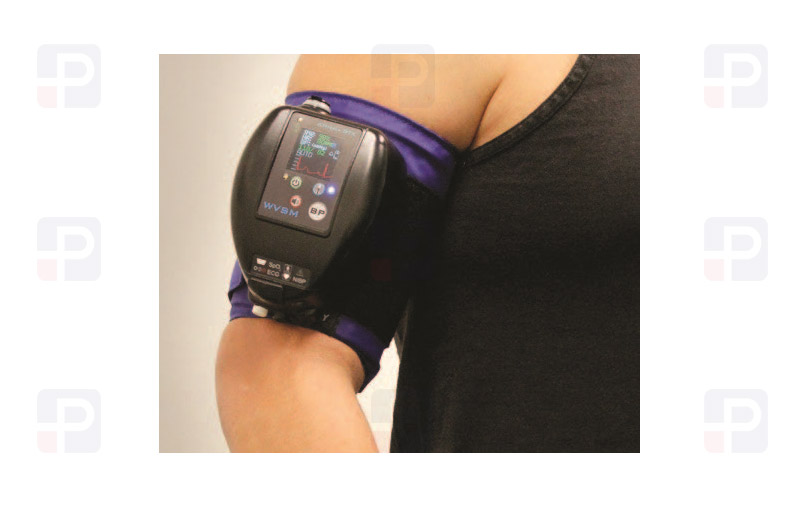The small and portable Wireless Vital Signs Monitor (WVSM) collects the data you need to make critical decisions, even in remote, limited access, and multi-patient environments. The WVSM allows a single caregiver to wirelessly monitor up to 20 patients simultaneously on a tablet, PC, or smart phone with Athena Device Management Suite (ADMS) via Wi-Fi, peer-to-peer network, or BLE. The ruggedized WVSM is ideal for patient monitoring in multiple emergency scenarios, both civilian and military. Lightweight portability enables live monitoring of vitals, from point-ofinjury and throughout care.
Design: We believe that wireless technology enables reliable monitoring of many patients at the point of injury and allows information to reach healthcare personnel faster. Medical monitoring devices should be mobile, affordable, intuitive and work with today’s wireless technologies. We believe that obtaining patient vital signs earlier can lead to better outcomes.
Software: Our wireless monitors are placed on the patient out at the point of injury and provide a seamless acquisition and transmission of information throughout transport and treatment. Multiple patients sync simultaneously to a mobile computer and alert the user to changing patient vital signs trends.
Hardware: The WVSM®, Wireless Vital Signs Monitor, is a small, rugged, highly mobile monitor that can be easily transported to remote locations. It attaches onto the patient’s blood pressure cuff, runs automatically and wirelessly transmits ECG, SpO2, and blood pressure data to compatible mobile computers running device software. WVSMs® are full feature, displaying patient data trends, while color coding parameters and summary indices.
Tech Specs:
- Weighs one pound
- A system can monitor up to 20 patients simultaneously
- Wi-Fi 802.11g
- Automatically monitors NIBP, SpO2, HR and ECG
- Captures 4.5 hours of patient data and trending
- Manual Inputs Include Glascow Coma Score, Temperature, and Respiratory Rate
- NIBP Systolic 40 – 260 mmHg / Diastolic 20-200 mmHg
- SpO2 Ranges 0-100% Saturation
- Three lead (Lead II) ECG





